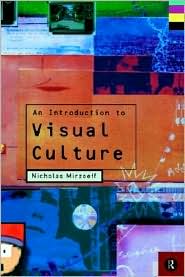Marquard Smith (ed.): Visual Culture Studies: Interviews With Key Thinkers (2008)
Filed under book | Tags: · interview, visual culture, visual studies

Visual Culture Studies presents 13 engaging and detailed interviews with some of the most influential intellectuals working today on the objects, subjects, media and environments of visual culture. Exploring historical and theoretical questions of vision, the visual and visuality, this collection reveals the provocative insights of these thinkers, as they have contributed in exhilarating ways to disturbing the parameters of more traditional areas of study across the Arts, Humanities, and Social Sciences. In so doing they have key roles in establishing Visual Culture Studies as a significant field of inquiry. Each interview draws out the interests and commitments of the interviewee to critically interrogate the past, present and future possibilities of Visual Culture Studies and visual culture itself. The discussions concentrate on three broad areas of deliberation:
* the intellectual and institutional status of Visual Culture Studies.
* the histories, genealogies and archaeologies of visual culture and its study.
* the diverse ways in which the experiences of vision, and the visual, can be articulated and mobilized to political, aesthetic and ethical ends.
This book demonstrates the intellectual significance of Visual Culture Studies, and the ongoing importance of the study of the visual.
Publisher SAGE, 2008
ISBN 1412923697, 9781412923699
239 pages
PDF (updated on 2013-6-5)
Comment (1)Nicholas Mirzoeff: An Introduction to Visual Culture (1999)
Filed under book | Tags: · art history, mass media, postmodernism, visual culture, visual studies
“The emerging field of visual culture poses rough terrain for beginners with its nuanced distinctions and reliance on postmodern theory. Not untilAn Introduction to Visual Culturehas any book attempted to present a comprehensive and accessible approach to this exciting new subject. Nicholas Mirzoeff begins by defining what visual culture is, and explores how and why visual media–fine art, cinema, the Internet, advertising, performance, photography, television–have become so central to contemporary everyday life. He argues that the visual is replacing the linguistic as our primary means of communicating with each other and of understanding our postmodern world, demonstrating this through powerful examples, from Diana’s funeral to the Latina singer Selena, and from the X-Files to Independence Day. Mirzoeff then examines the importance of race and ethnicity, gender and sexuality, and the body in visual culture. These various forms of social discourse provide essential tools for readingimages and thus define the study of visual culture as an inherently political project. Mirzoeff tackles the difficult subject of the gaze and the “other” and offers the reader a clear synthesis of these concepts. Lively and provocative,An Introduction to Visual Cultureoffers an accessible entry to this new way of understanding images.”
Keywords: Art and society, Visual communication, Visual perception, Mass media, Communication and culture, Postmodernism, Visual sociology, Popular culture, Media
Publisher Routledge, 1999
ISBN 0415158761, 9780415158763
274 pages
EPUB (updated on 2012-7-18)
Comment (1)

